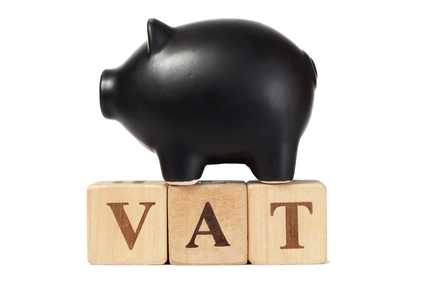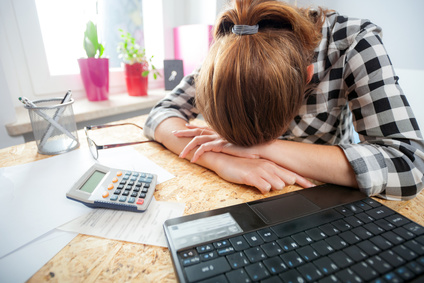 The VAT threshold for 2017-18 is £85,000 which means that if your business has taxable sales equal to or above this amount over a 12 month period you must register for VAT. For example if these sales from April to March total £80,000 you do not need to register for VAT but if the taxable sales from May to April, just one month later, total £85,000 or more you must register for VAT. Taxable sales are goods or services you sell which have a tax rate of 0% or 20%. If you sell goods or services which are exempt or outside the scope of VAT then you do not need to register for VAT. Further information about taxable sales can be found here.
The VAT threshold for 2017-18 is £85,000 which means that if your business has taxable sales equal to or above this amount over a 12 month period you must register for VAT. For example if these sales from April to March total £80,000 you do not need to register for VAT but if the taxable sales from May to April, just one month later, total £85,000 or more you must register for VAT. Taxable sales are goods or services you sell which have a tax rate of 0% or 20%. If you sell goods or services which are exempt or outside the scope of VAT then you do not need to register for VAT. Further information about taxable sales can be found here.
If you pay for Google Ads or have any other EU purchase which has a reverse charge the cost of this must be added to your taxable sales income because as a business purchasing these services you have a responsibility to declare (and claim back) the VAT due. This may push you over the VAT threshold sooner than you think and must be taken into account when totaling your taxable sales.
If you had just one large sale or a few smaller ones which pushed you over the threshold but this was not expected to continue you could apply to HMRC not to become VAT registered. However you would have to supply evidence that you would not go above the de-registration threshold of £83,000 in the next 12 months.
No-one should worry about becoming VAT registered. It can be advantageous to your business: firstly because now you can claim back VAT on the costs you incur which have VAT and secondly because you will appear to be a larger and therefore more successful business. It can be a disadvantage too, of course, but only if all or the majority of your customers are not VAT registered themselves. However domestic customers never need to be told the price + VAT, just the total price, whereas business customers always expect to be told the price + VAT.
If you do reach the VAT threshold for registration you only have 30 days from reaching that threshold to register. If you do not register within this timescale you could be liable to pay any VAT which you should have charged your customers from the date you should have been registered. You may also receive a penalty.
VAT registration is very straightforward and can be done online. Follow this link to online VAT registration.
As soon as you register or choose a date you want to become VAT registered from you are responsible for collecting 20% VAT on your sales. This will mean either increasing your charges or losing 20% of your current income. Many businesses who know they will eventually become VAT registered charge more from the start because they don't want to increase their fees further down the line. This is a good option for fairly new businesses who expect rapid growth as it provides some extra cash in the early days.
Once you have become VAT registered you will be able to claim back some of the costs you incurred when setting up your business. Some businesses will register for VAT as soon as they start out so they can claim back VAT on their costs. Whilst this may help cash flow in the beginning it may not help that you have to charge VAT on your sales. As long as you register within 4 years of making your major VAT purchases you can claim back VAT on those purchases when you submit your first VAT return. Those goods must still be in your possession or must have been used to make other goods which you still have. You can also claim back VAT on services up to six months prior to your VAT registration date. So it isn't necessary to register for VAT as soon as you start out but it is definitely worth planning your VAT registration if you can.
Before you register for VAT you also need to plan which VAT scheme will work best for your business.
The Cash Accounting Scheme is better for you if you have long payment terms for your customers as you only declare the VAT on payments that you have received during that quarter. Equally you will only be able to claim back the VAT on items you have paid for during the quarter so again planning is important to ensure you maximise the VAT you can claim by paying your VAT registered suppliers before the end of the quarter and not at the beginning of the next quarter.
The Standard Accounting Scheme works best if your customers pay promptly but you do not pay your suppliers so promptly as VAT is reported based on date of invoice rather than date of receipt or payment.
The other option to consider is the Flat Rate VAT scheme. Whilst you still charge your customers 20% VAT you only have to pay HMRC a percentage of the VAT you have collected. This is because you cannot claim back VAT on your purchases except on certain capital assets over £2,000. The Flat Rate percentage varies from business to business. You can find the rates here. You decide which rate is applicable to your business, HMRC approves it and you calculate this percentage of your gross sales for the quarter and pay that across to HMRC. This may be an advantageous scheme for some businesses but generally it is there to ease the burden of record keeping for small businesses. If you are in your first year of business when you register for VAT and you choose the Flat Rate Scheme you can reduce your flat rate percentage by 1% for the first 12 months. You can apply for this scheme when completing your VAT registration online.

If you are finding VAT challenging and would love some help to ease the pain and give you peace of mind contact our bookkeeping team who are very used to dealing with VAT.
